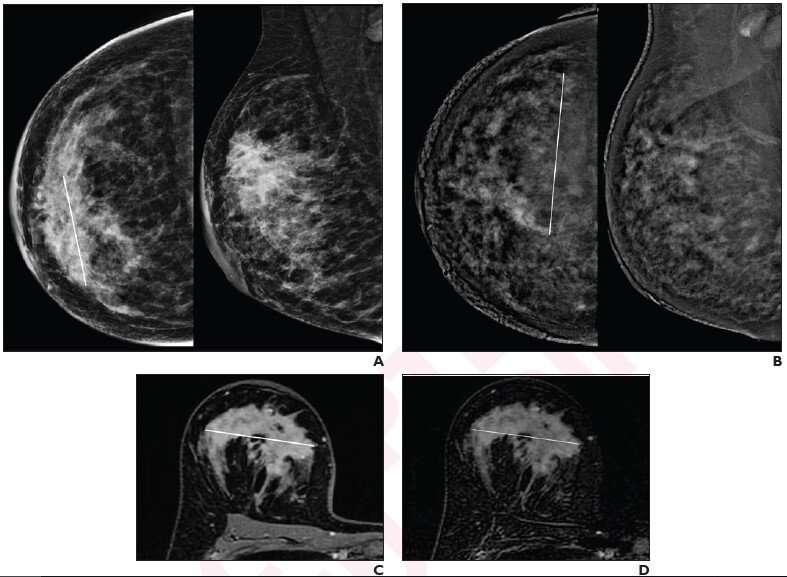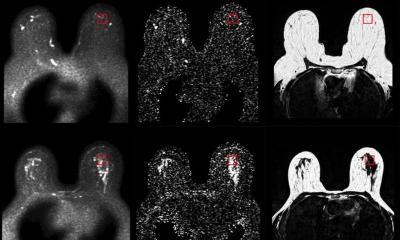
Credit: American Roentgen Ray Society (ARRS), American Journal of Roentgenology (AJR)
News • Contrast-enhanced mammography vs. MRI
Neoadjuvant therapy response in breast cancer
Contrast-enhanced mammography (CEM) may be a useful alternative test for neoadjuvant therapy (NAT) response assessment in patients with breast cancer who are unable to undergo MRI.
"After NAT for breast cancer, CEM and MRI yielded comparable assessments of lesion size (both slightly overestimated vs pathology) and RECIST categories, and no significant difference in specificity for pathologic complete response," wrote corresponding author Rubina Manuela Trimboli of IRCCS Humanitas Research Hospital in Milan, Italy. Noting that MRI had higher sensitivity for pathologic complete response, Trimboli wrote that "delayed CEM acquisition may help detect residual ductal carcinoma in situ (DCIS)."
Trimboli and the team's prospective study included 51 patients (mean age, 46 years) with biopsy-proven breast cancer from May 2015 to April 2018, who were candidates for NAT. Patients underwent both CEM and MRI before, during, and after NAT: pre-NAT, mid-NAT, and post-NAT, respectively. Post-NAT CEM included a 6-minute delayed acquisition. One breast radiologist with experience in CEM reviewed CEM examinations; one breast radiologist with experience in MRI reviewed MRI examinations.
Compared with pathology, post-NAT CEM, MRI, and delayed CEM systematically overestimated residual tumor size by 0.8 mm, 1.9 mm, and 1.2 mm, respectively. For detecting pathologic complete response by post-NAT imaging, sensitivity and specificity were 81% and 83% for CEM, 100% and 86% for MRI, and 81% and 89% for delayed CEM.
"While MRI remains the preferred test for NAT monitoring," the authors of the AJR article concluded, "the findings support CEM as a useful alternative when MRI is contraindicated or not tolerated."
Source: American Roentgen Ray Society
26.06.2022











